Over 50 years ago, Philips commissioned Le Corbusier to create their pavilion at the 1958 Brussels World’s Fair. Designed to showcase the company’s engineering prowess, the pavilion was a cluster of nine hyperbolic paraboloid in which music was spatialized by sound projectionists using telephone dials. Edgard Varèse composed a piece of electronic music, the Poème Electronique, and drew up a detailed spatialization scheme for the entire piece.
Neither Varèse nor Le Corbusier were Dutch but Varèse’s composition was developed with the engineers at Philips’ NatLab, in Eindhoven. This experimental laboratory gave light to many inventions such as the radio tube, short wave transmitter, videodisc and compact disc. The NatLab was located at the Klokgebouw, a 1928 industrial hall which in November was housing the STRP festival for the fifth time.
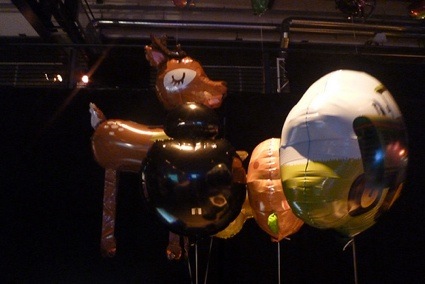
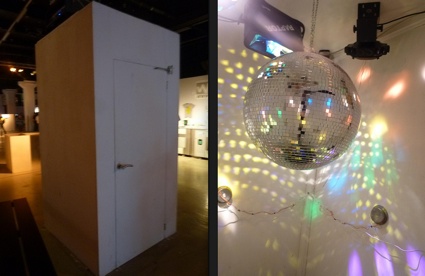 Mark Bain, Disco for N/One, 2001
Mark Bain, Disco for N/One, 2001
STRP was in great shape this year. It’s a real pleasure to follow a festival that gets from strength to strength in such a fast and steady way. The symposium was impeccable, the night programme as edgy and spectacular as ever. At least that’s what i was told. At night i either sleep or blog but as you can see the crowd was clearly satisfied:
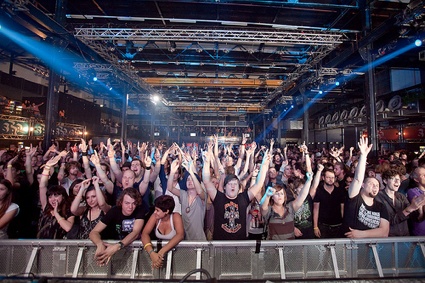 STRP Festival 2011. Photo: Willie Kerkhof
STRP Festival 2011. Photo: Willie Kerkhof
The organizers and curators also had the excellent idea of setting up an exhibition that brought the spotlight on the history of Dutch art and technology. The show was both a celebration of the talent of media artists in The Netherlands but also a gesture of support towards the Dutch new media institutes (namely V2_, Waag Society, STEIM, Mediamatic, WORM, Submarine Channel, NIMk) whose survival is threatened by drastic (and short-sighted) governmental cuts.
Regarded by some as the first “multimedia work of art” and developed at the very location of the STRP festival, the Poème Electronique was the best opener to the exhibition timeline of past and present media art works in The Netherlands. The exhibition was a captivating journey that brought me from old favourite such as Spatial Sounds….
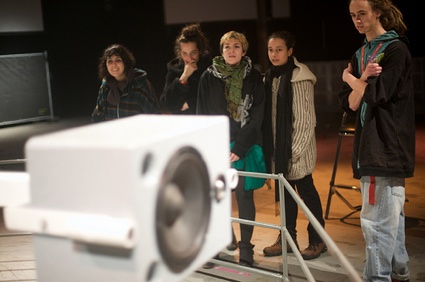 Marnix de Nijs and Edwin van der Heide, Spatial Sounds (2000) at STRP 2011. Photo: Boudewijn Bollmann
Marnix de Nijs and Edwin van der Heide, Spatial Sounds (2000) at STRP 2011. Photo: Boudewijn Bollmann
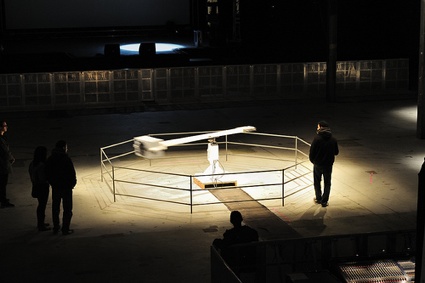 Marnix de Nijs and Edwin van der Heide, Spatial Sound (2000) at STRP 2011. Photo: Mick Visser
Marnix de Nijs and Edwin van der Heide, Spatial Sound (2000) at STRP 2011. Photo: Mick Visser
To classics of Dutch media art (many of which i was only discovering) and world premiere of installations developed by young Dutch artists. Here’s a quick selection:
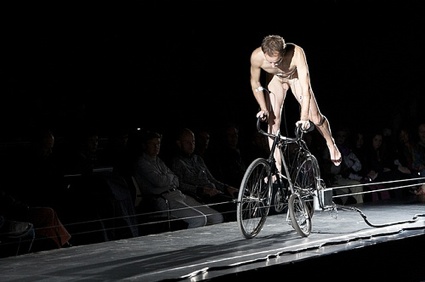 Dick Raaijmakers, Graphic Method Bicycle @ TodaysArt collab with Dag in de Branding. Photo by TodaysArt
Dick Raaijmakers, Graphic Method Bicycle @ TodaysArt collab with Dag in de Branding. Photo by TodaysArt
The video of the re-enactment of Dick Raaijmakers‘ 1979 excruciatingly slow performance. In Graphic Method Bicycle, a naked cyclist covers a distance of 10 metres in 30 minutes. The bicycle is pulled forwards by a motorized winch and steel cable. Lifted up off the saddle by one of the pedals extremely slowly, the cyclist is forced to dismount. It’s like a slow-motion video in flesh and bone. The performance requires considerable strength, concentration and balance and one can hear his pulse, breath and see his muscles quivering.
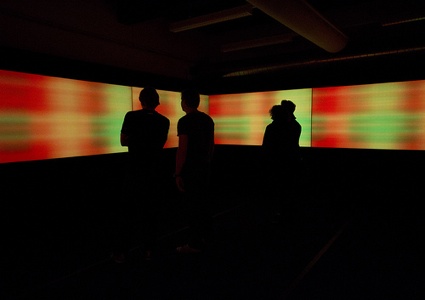 Edwin van der Heide, DSLE 2 (2011) at STRP 2011. Photo courtesy Studio Edwin van der Heide
Edwin van der Heide, DSLE 2 (2011) at STRP 2011. Photo courtesy Studio Edwin van der Heide
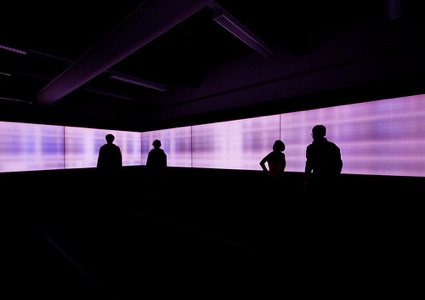 Edwin van der Heide, DSLE 2 (2011) at STRP 2011. Photo courtesy Studio Edwin van der Heide
Edwin van der Heide, DSLE 2 (2011) at STRP 2011. Photo courtesy Studio Edwin van der Heide
Perhaps my favourite work in the exhibition, Edwin van der Heide‘s DSLE -2- plays with light and sound to throw off spatial perception. The immersive environment uses octophonic loudspeakers and a surround installation made of LED panels that light up a screen.
Moments where sound and light appear to interrelate with each other are complemented with moments where the spatial perception of sound and light contradict with each other and lead to distinct ambivalences in our perception of space.
STRP had also toured the country’s art academies to find some of the most promising artists. One of them is Jeffrey Van Oers whose Ambisonic Flightcase is a dark box for one person that encloses you into 3-D surround sound. At a time when every single work is multi-sensory, multi-disciplinary, it’s fantastic to be offered the opportunity to focus on hearing only:
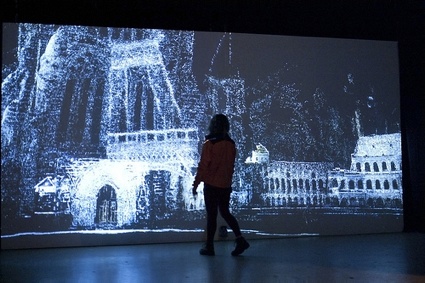 Marnix de Nijs, Exploded Views 2.0 at STRP 2011
Marnix de Nijs, Exploded Views 2.0 at STRP 2011
Marnix de Nijs gave a world wide update to his installation Exploded Views. The immersive piece invites visitors to physically navigate 3D models of some of the world’s most photographed sites constructed from images uploaded on Flickr. The amount of detail in the 3-D model corresponds to the amount of photos of a given location. The 2.0. suffix is thus still very much in vogue in the NL.
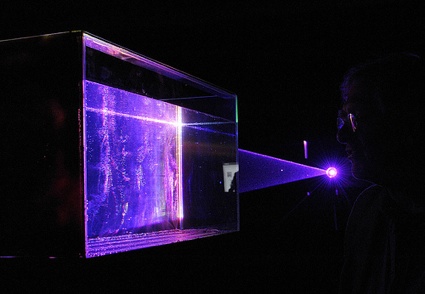 Domnitch and Gelfand, Hydrogeny (2010) at STRP 2011. Photo: Jean Pierre Reijnen
Domnitch and Gelfand, Hydrogeny (2010) at STRP 2011. Photo: Jean Pierre Reijnen
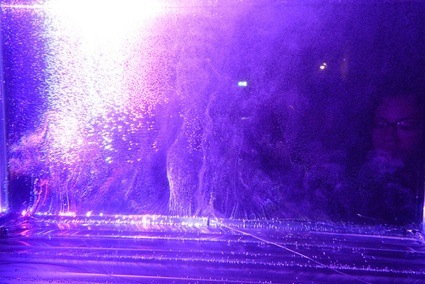 Domnitch and Gelfand, Hydrogeny, 2010
Domnitch and Gelfand, Hydrogeny, 2010
Evelina Domnitch and Dmtry Gelfand’s Hydrogeny is a tank of ultra-pure water scanned by a laser sheet.
Electrodes at the bottom of the tank split water into hydrogen and oxygen gas which form bubbles that slowly make their way to the surface. The water is further disturbed by sound and as the sonic frequency and amplitude rises, the hydrogen bubbles start to coalesce with one another while a white laser sheet scans and illuminates their movements.
Beyond macroscopically observable bubbles, an expanse of nanobubbles hides within the water’s internal architecture. Some researchers presume that these nanobubbles of dissolved gas are the carriers of water’s magnetic ‘memory’, enabling electromagnetic fields to saturate its innards for hours and even days after their initial appearance. In the seas and oceans, the lingering presence of electromagnetic fields photonically imparted by sunlight, triggers the electrolysis responsible for most of the Earth’s hydrogen. An essential form of photosynthesis, solar water splitting is the cleanest and most efficient means imaginable for generating and storing energy.
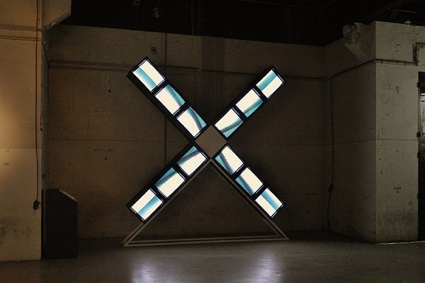 Bert Schutter, Mill X (1982) at STRP 2011. Photo: Mick Visser
Bert Schutter, Mill X (1982) at STRP 2011. Photo: Mick Visser
Bert Schutter‘s windmill is best enjoyed with sound and movement:
And here’s Floris Kaayk‘s Metalosis Maligna because i find it as good as when i first saw it back in 2006.
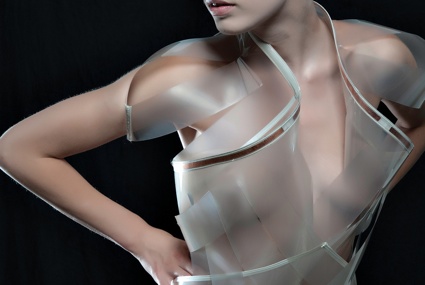 Daan Roosegaarde, Intimacy 2.0
Daan Roosegaarde, Intimacy 2.0
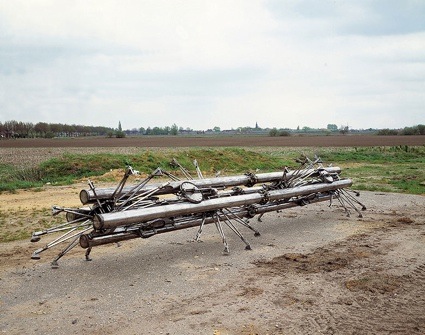 Gerrit Van Bakel, Tarim Machine, 1982
Gerrit Van Bakel, Tarim Machine, 1982
More images in STRP’s flickr set and on mine.
Previously: Delusions of Self-Immolation.
